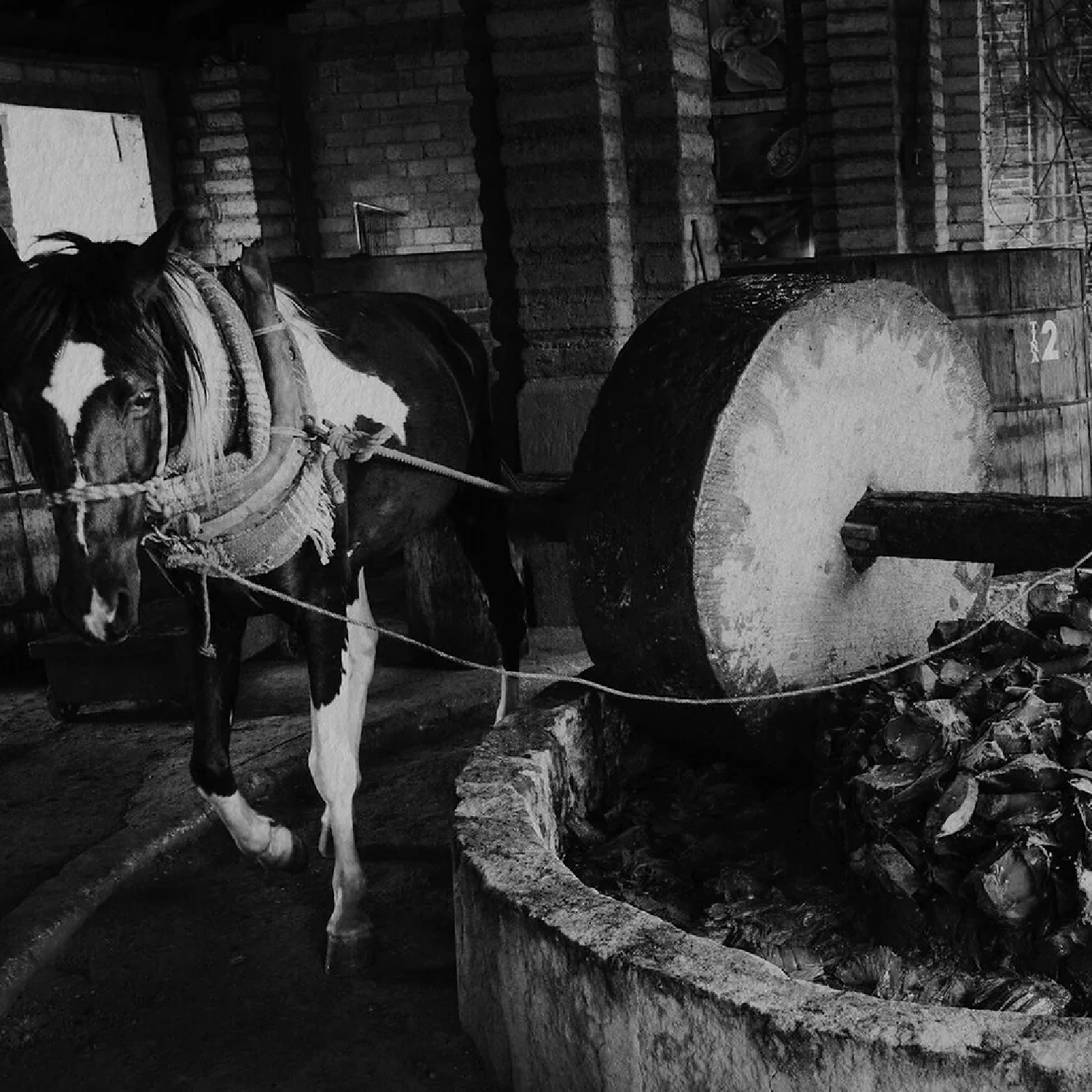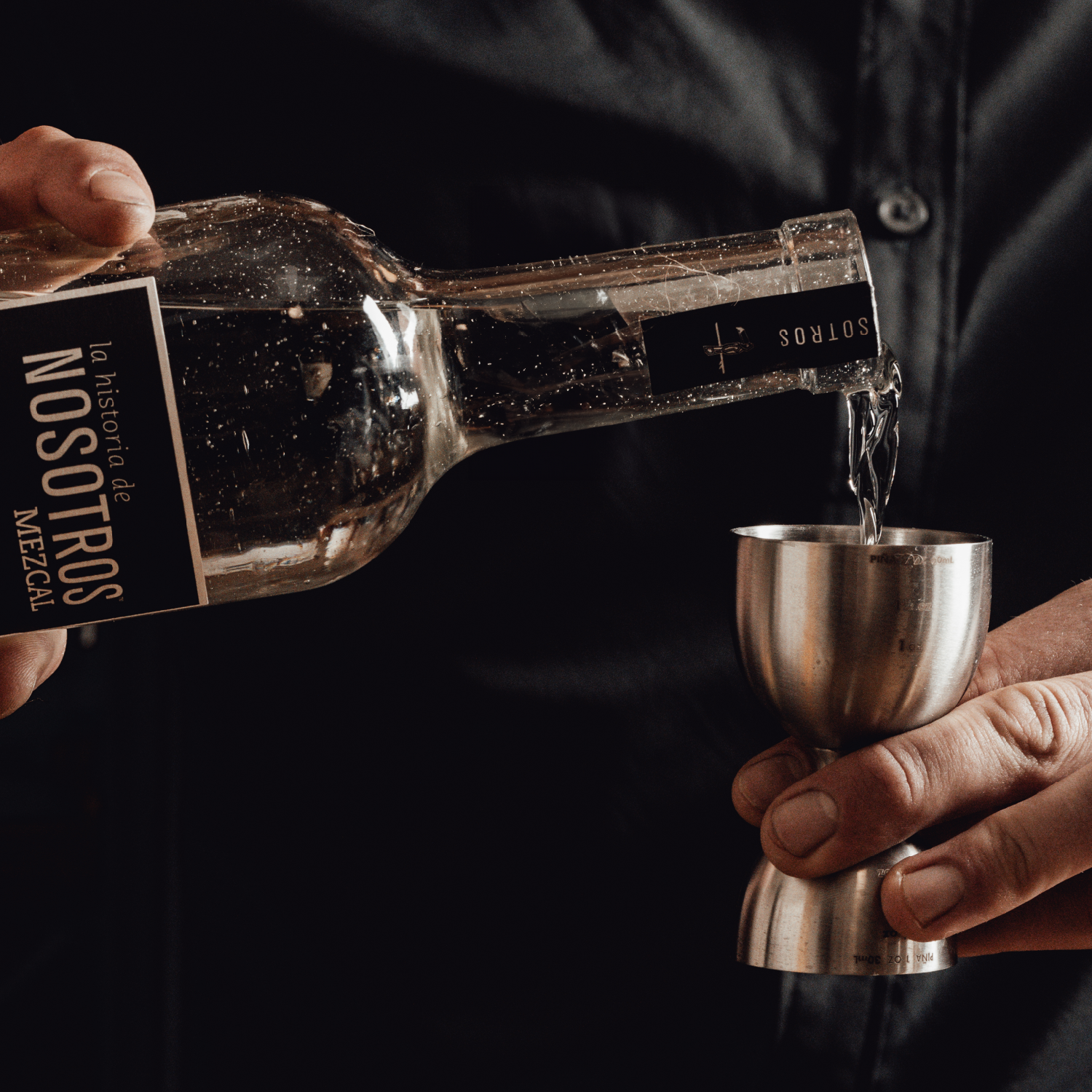Article: Tequila vs. Mezcal

Tequila vs. Mezcal
Written by: Niko Loyatho
Basics, Specifics, Flavor, and Thoughts From Your Bartender
“Tequila is to wake the living. Mezcal is to wake the dead.” John P. McEvoy. It all started with mezcal. Mezcal is the oldest distilled spirit in the Americas, dating back at least four to five hundred years. In the 1970’s, mezcal—specifically a style of mezcal from Jalisco—became popular on the world market. In 1978 it got its first formal recognition from The World Intellectual Property Organization. Simultaneously Mexico formed the Norma Oficial Mexican (NOM), or Official Mexican Standard, in order to set standards of production and packaging for this product. It was given the name “tequila”, after a small town in the state of Jalisco that was and still is the heart of tequila production in Mexico.
Basics
Tequila is a mezcal. A “mezcal” refers to any spirit distilled from agave. What separates tequila is the agave it’s made from (weber blue or agave tequilana) as well as where and how it’s made. “Tequila” is an internationally recognized Denomination of Origin (D.O.)—meaning, like champagne or burgundy can only be made in their respective regions of France, so can tequila only be made in its designated regions of Mexico. Recognition made tequila the dominant mezcal for decades. Sales climbed, production industrialized, and other more traditional mezcals disappeared from international awareness. Even as recent as 2016, ninety-nine percent of Mexico’s agave liquor exports were tequila. Now, champagne is fantastic but imagine if it were the only wine. Until legislation in 1995, mezcal was not a legal term. That year, mezcal was given its own D.O. and production regulations. Informally, “mezcal” still refers to any agave spirit. But now, resultant of these new laws and their most recent update in 2016, when we say mezcal we don’t mean tequila.
Specifics
Tequila and mezcal are both made from cooked agave and are twice distilled. That’s about all they share. The simplest approach to differentiating them is by two categories: ingredients and process.
Ingredients: Tequila can only be made from weber blue agave and exclusively in five
Mexican states: Jalisco, Michoacán, Guanajuato, Nayarit, and Tamaulipas. The majority
is made in Jalisco. Mezcal is made from upwards of fifty varieties of agave and can be made in nine Mexican states: Oaxaca, Durango, Guanajuato, Guerrero, San Luis Potosi, Tamaulipas, Zacatecas, Michoacán, and Puebla. Most mezcal is made from an agave varietal called “espadín” and in the state of Oaxaca. Weber blue agave has been cultivated by the tequila industry for decades and today all but a microscopic portion is sourced from farms. Historically, agave for mezcal was wild-sourced. With an increase in demand, producers have begun to cultivate agave espadín as well as small amounts of other varieties. But today, much of mezcal agave is still wild-sourced. Don’t think of this in terms of quality so much as production expense. Wild sourcing is terribly time-consuming and labor-intensive. Tequila lovers can relish the fact that quality tequila can be produced at a lower cost. Mezcal fans understand and accordingly appreciate the extra time and work required for their smoky affair.
Process:
An agave looks a little like a giant pineapple but below the fronds, where a pineapple is soft flesh, an agave is more like wood. This portion, called the piña, must be cooked and then milled (crushed) in order to extract the sugars. Tequila’s agave is cooked in either a brick oven, an autoclave, or a diffuser. An autoclave is a large metal cylinder that pressurizes and can cook large batches in as few as eight hours. A diffuser is a machine the size of a small moon that often doesn’t actually even cook the agave but rather treats the agave with hydrochloric acid to convert its inulin into fermentable sugar. This process so decimates the agave that artificial flavoring has to be added after to approximate the real flavor of tequila. Think of a diffuser like cooking a dry-aged Wagyu steak in a microwave. Think of it like puppies dying. Agave for mezcal is cooked in a large earthen pit called horno (oven). This ancestral method predates above-ground ovens large enough to roast agave batches. Cooking agave this way takes days and sometimes the fire is maintained for as long as a month. This stage is where mezcal gets most of its smoky flavor. Whether they’re burning wood or other foliage, the fuel smokes. By contrast, tequila agaves are cooked using gas or steam (or tile cleaner, for diffusers) and there is less if any smoke. Smoke or no smoke, an agave has to be cooked through for all the inulin to be converted to sugar. This is integral to the final flavor and quality of the tequila or mezcal. Since an agave piña is more or less a large ball of wood, the slower and longer the better. Agave for Nosotros Tequila is slow-cooked in brick ovens for sixty hours.


After cooking, the agave must be crushed to extract the sugars. Most tequila producers use either a roller mill or a diffuser. Some diffusers actually invert the process, first blasting the agave to slurry with pressurized water so that it can “cook” in its acid bath. Again, picture puppies dying. A roller mill is efficient without sacrificing quality. It looks exactly like an assembly-line-wood-chipper-loom- aqueduct thing. Too small to afford expensive machinery, most mezcal producers use a giant stone wheel called a tahona. This technique, like pit roasting, predates industrial technologies. Note: a handful of tequila producers still make artisanal batches or portions of batches using a tahona.


Flavor
Almost all tequilas are bottled at forty percent alcohol by volume; the target is “smooth”. Mezcal, on the other hand, is traditionally bottled between forty-five and fifty-five percent; the aim is flavor and the range allows producers to find the point where the most can be tasted. Nosotros mezcal is bottled at 42%, exactly where we tasted the perfect marriage of flavor and smoothness.
Tequila
Tequilas can taste very different from each other despite all being weber blue agave. This spectrum is the result of where the agave is grown and how it is produced. Still, the single varietal and largely industrialized process confines that spectrum. Aging is an integral part of tequila’s identity because it can provide another layer of complexity and individuality. Nosotros reposado is aged in French oak and much longer than other reposados, both of which make it a rare breed in its class. Some tequilas attempt to distinguish themselves by another avenue. Modern technology and loose regulations have lured many producers to make cheap, terrible hooch and chase consumers instead with outlandish packaging. Of all the world spirits, tequila is the uncontested champion of asinine bottle shapes. And most of these tequilas are motor oil. That said, there are a handful of exceptional tequilas we at Nosotros love despite their cartoon portage vessels.
Mezcal
So many agaves and such varying processes make mezcals wildly different from one to another. Few spirits are capable of showcasing the fruit and terroir so well. An agave plant must grow to full maturity before you can harvest it and some varietals, like tepeztate, take upwards of thirty years. This is part of why they say mezcal is the only spirit that is born in a mature state.
A thought from your bartender
“The alcohol you drink is who you want to be.” -Amanda Peet in Brockmire. People who drink Whiteclaw want to be skinny and drunk (can’t lie, we tip one back from time to time). Guys who drink old fashioneds want to be Don Draper. Ladies who drink cosmos want to be Carrie Bradshaw. There are no exceptions—we have a scatter plot that proves it. Fun as it is to stereotype, the truth is the drink changes with the occasion. And sometimes the drink is the occasion.
Tequila is a festival in a glass. Most of us in southern California were raised on it. After we turned twenty-one of course. And some swore it off by twenty-two. But the hooch that had us buckled and hurting was barely tequila. We all make mistakes. Swear it back on. You’re missing the best part, el sabor!
Judging mezcal by its smoke is like saying southern barbeque tastes like cigarettes. Yes, it’s smoky. So was Sharon Stone in Basic Instincts. Keep your nose in the glass. Be patient. There is an iceberg of flavor below the tip of smoke. The billowy curtains will roll back and you will discover agave nirvana. Tequila is trusty old faithful. Mezcal is the history and future of a people. We at Nosotros wouldn’t be happy without either.

